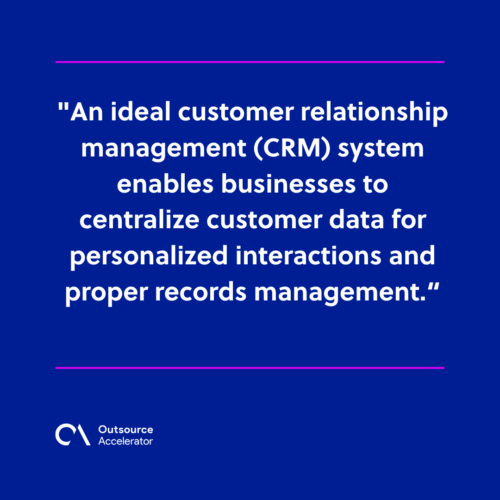Inbound telemarketing explained

Inbound telemarketing is a powerful strategy that allows businesses to connect with potential customers and nurture existing relationships.
By leveraging the phone as a tool for engagement, companies can deliver exceptional customer support, handle sales inquiries, and qualify leads.
This article will explore the various aspects of inbound telemarketing and how to master this approach.
Inbound telemarketing involves receiving incoming calls from prospects. It is a reactive approach in telemarketing when customers show an interest in a product or service.
What makes it different from the usual inbound support is its functionality. Once potential customers find the product through lead generation efforts in advertisements, websites, or social media posts, they will contact the company for further inquiry on getting it.
Outbound vs. Inbound telemarketing
Both inbound and outbound telemarketing play distinct roles to engage with potential customers.
The key difference lies in initiating the call – outbound telemarketing reaches out to potential customers, while inbound telemarketing encourages them to reach out to the company.
Inbound telemarketing is more reactive, while outbound is more proactive. An inbound call center requires agents to answer the leads’ questions as accurately as possible so they can decide more accurately.
In outbound telemarketing, sales teams must pitch the product to their leads to see if it fits them.

3 types of inbound telemarketing services
Companies can leverage several inbound telemarketing services to engage with customers and drive business growth.
These include:
1. Sales inquiries
Primarily, inbound telemarketing facilitates sales inquiries. Prospects may call to learn more about a product or service before purchasing.
The telemarketer then provides accurate information, highlights the benefits, and sets up an appointment for in-person deals as needed.
The inbound call center serves as the central hub where these interactions take place, equipped with trained agents who handle incoming calls efficiently and effectively.
2. Customer support
Inbound telemarketing can also serve as a platform for providing excellent customer support. It allows companies to address customer inquiries and resolve any doubts they have about the product or service.
Inbound calls involve answering customer queries and providing information about products or services, ensuring a seamless customer experience.
3. Lead qualification
Inbound telemarketing is a valuable tool for lead qualification.
Businesses can determine their interest level and customer potential by engaging with leads over the phone. This enables companies to prioritize their efforts, focusing on leads more likely to convert.
Benefits of inbound telemarketing
Inbound telemarketing offers the following benefits for businesses, enhancing customer service and sales:
Personalized interaction
With inbound telemarketing, companies can provide personalized engagement to their customers.
By engaging in a real-time conversation, businesses can tailor their approach based on each customer’s specific needs and preferences, fostering a deeper connection.
Sales teams can employ various tactics in personalizing lead experience through inbound calling. This includes providing a walkthrough of their offers and the latest product features their customers should know.

Increased conversion rates
Inbound telemarketing has great chances of converting customers. This is because leads who initiate contact though inbound calls are typically more interested and inclined to make a purchase or take the desired action.
Leveraging this interest and a good sales pitch can effectively lead to improved sales outcomes.
Enhanced customer satisfaction
Inbound telemarketing significantly contributes to customer satisfaction.
Businesses can promptly address customer inquiries, concerns, and issues to demonstrate their commitment to customer care during inbound calls.
At the same time, they can combine the efforts of sales and customer service teams to listen, troubleshoot problems, and resolve issues promptly and empathetically.
This helps build a positive reputation and encourages customer loyalty.
Inbound telemarketing strategies to remember
Implementing effective strategies is crucial to maximize the benefits of inbound telemarketing. Here are three important strategies to keep in mind:
1. Comprehensive training
Telemarketers should receive comprehensive training to develop the skills necessary for effective communication and problem-solving for inbound and outbound telemarketing.
Their training should focus on the following skills to improve customer interactions:
- Active listening
- Product knowledge
- Empathy
- Analytical skills
- Team collaboration
Firms can employ sales games, webinars, and other employee training methods for skill improvement. These activities empower telemarketers to address inquiries confidently and recommend suitable plans based on individual needs.
2. Quality assurance
Implementing quality assurance processes and monitoring calls for compliance and professionalism ensures consistent service delivery.
Regular feedback and coaching sessions help telemarketers improve their performance, enhancing customer experiences.
Additionally, firms can employ call recording, call listening, and implementing CSAT scores as a way to track their performance. They can provide constructive feedback to telemarketers, highlighting areas for improvement, such as tone of voice and product knowledge.
3. Customer relationship management tool
An ideal customer relationship management (CRM) system enables businesses to centralize customer data for personalized interactions and proper records management.
The right CRM system allows businesses to maximize its functionalities and features according to their needs. Apart from this, they can ensure smooth inbound telemarketing processes through a seamless stream of information.
Telemarketers can reference the CRM to offer personalized product recommendations, improving the chances of making a sale.
Mastering inbound telemarketing
Mastering inbound telemarketing service requires a combination of effective strategies, well-trained telemarketers, and a customer-centric approach.
While there is obvious business value in outbound call centers, there is also a craft to catering callers that come to you.
By harnessing the power of personalized interaction and inbound telemarketing, inbound call centers can drive sales, enhance customer satisfaction, and achieve long-term success.








 Independent
Independent




